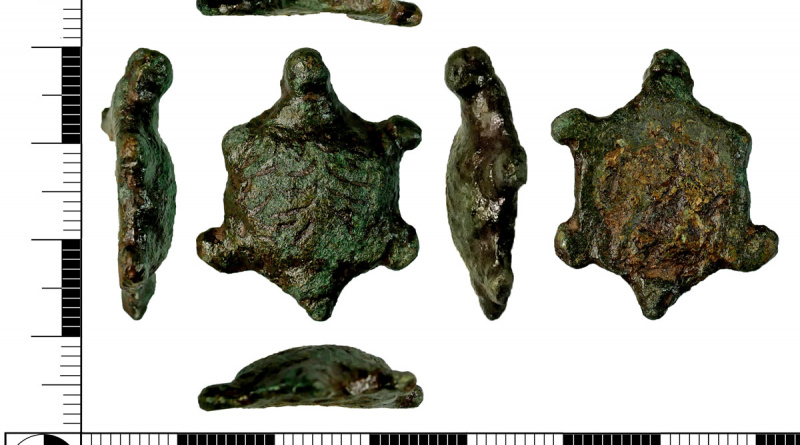Roman tortoise figurine
A copper-alloy figurine, dating to AD 100 – 400, in the form of a tortoise or turtle. There is no indication of any fixing mechanism and so it is a figurine rather than a brooch. It is considered a Find of Note.
The PAS record notes that the tortoise has an association with the Roman god Mercury and his Greek equivalent, Hermes. The story of Hermes and the tortoise can be found in Homers, Hymn to Hermes. According to Homer, Hermes had a busy first day “Born with the dawning, at mid-day he [Hermes] played on the lyre, and in the evening he stole the cattle of far-shooting Apollo“.
The hymn describes how the new-born Hermes gets out of his cot and on going outside encounters a tortoise. He scoops out the flesh and fashions a lyre with ox horns and strings of sheep-gut. He plays with it for a bit but soon gets bored and heads out again to steal Apollo’s sheep. Apollo wasn’t best pleased but on hearing Hermes play the lyre, he agreed to take it in exchange for the cattle.
Therefore, as well as his more well known attributes, such as a caduceus, winged sandals and helmet Hermes (and Mercury) is also associated with a tortoise. Mercury was the Roman god of financial gain, commerce, eloquence, messages, travellers, boundaries, luck, trickery, and thieves and so the tortoise figurine would have been a suitable talisman for a wide range of people.

